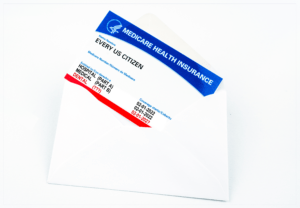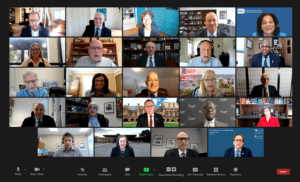
By Rick Valachovic, DMD, MPH, Clinical Professor and Director of the NYU Dentistry Center for Oral Health Policy and Management
The talk of the dental community this winter is the long-awaited report, Oral Health in America: Advances and Challenges, released by the National Institute of Dental and Craniofacial Research in December 2021. Conceived as a follow up to the groundbreaking Oral Health in America: A Report of the Surgeon General released in 2000, the current report is more than twice as long and covers ground that was far less visible two decades ago: pain management, substance use disorders, team-based workforce models, and major advances in engineering and the biological sciences.
It’s encouraging to note that we have many more tools at our disposal today for combatting oral diseases:
- new technologies for imaging, manufacturing, and restoring lost or damaged teeth;
- a vaccine against the virus that causes most oral cancers;
- a more diverse dental workforce and greater knowledge of how to work effectively in teams; and
- a better understanding of genomics, the microbiome, and the social determinants of health and disease.
That said, the latest report contains sobering news as well. I was especially struck by how little the nation’s oral health has improved since the 2000 report alerted readers to the silent epidemic of oral disease in the United States. That report made abundantly clear that tooth decay and tooth loss were not natural consequences of aging but preventable diseases, and that their distribution throughout the population was anything but equitable. The 2021 report doubles down on those messages, but they no longer come as a shock.
On a few fronts, there has been progress. Only 13% of older adults (those aged 65-74) lack any or all of their teeth today. That’s a radical improvement over the 1960s, when almost half of this population lived with tooth loss. And tremendous progress has been made in preventing and treating tooth decay in preschool children, thanks in large measure to policymakers’ success in creating and expanding federal insurance programs targeting this population. As a pediatric dentist, I was especially pleased with the report’s emphasis on adolescents as they age into adulthood. Establishing policies to improve their oral health will be the next step in paving the way for a healthier population moving forward.
The importance of policy change can’t be overstated, and the authors of the new report appreciate the centrality of policy in facilitating improvement in the nation’s oral health. This message resonates strongly here at the NYU Dentistry Center for Oral Health Policy and Management and across NYU Dentistry, where we are already engaged in many of the efforts called for in the report.
- We’re expanding access to care for underserved populations through the Oral Health Center for People with Disabilities and VOCARE (Veterans Oral Care Access Resource), our partnership with the Department of Veterans Affairs (VA). We’re also contributing to addressing the national opioid crisis, called out in the report, through the new NYU Pain Research Center.
- The NYU Dentistry Department of Epidemiology & Health Promotion, the only U.S.-based World Health Organization designated Collaborating Center for Quality Improvement and Evidence-based Dentistry, is working globally to advance prevention of oral disease and integrate dentistry into primary care.
- And we’re preparing a new generation to lead these initiatives through the NYU Dentistry Student Leadership Institute.
My NYU colleagues and I were also involved in creating the report itself. Five of us served as contributing authors, as did four of our colleagues in the NYU medical and nursing schools, and three of us, including yours truly, served as scientific reviewers.
This is not to say that those of us in academic dentistry have it all figured out. I would have liked to see the report discuss dental education in greater detail. While we’ve made a lot of progress over the years, there’s much more to do. I am embarrassed when I think back to my own days as a young white dentist treating patients as a resident at Children’s Hospital in the largely Black community of Roxbury, Massachusetts. I treated some kids over and over again, and never fully appreciated how the lack of access to healthy foods in the neighborhood were contributing to the state of their teeth. Today’s dental students are informed about these challenges, but are we preparing them to meet their patients’ social and economic needs effectively or to advocate on their behalf? I’m not so sure.
The report does mention the high cost of dental education and the burden of student debt, but it does not offer any remedies to these problems. Preparing students for unsupervised practice in four short years at a price that would incentivize students from underserved communities to join the profession is a challenge that merits novel solutions.
Those disappointments aside, I applaud the report’s authors for issuing a clear and concise call to action, one that can fuel oral health advocacy in the years ahead. My hope is that it will galvanize our community’s commitment to advance oral health through policy and research, and rally others to join our efforts.
Why didn’t that happen two decades ago? The 2000 report did light a fire under oral health advocates, and it might have ignited the attention of policymakers, too, but the events of September 11, 2001, quickly absorbed their energies. Today, policymakers are also focused elsewhere — on the COVID-19 pandemic — and rightly so, but they must start to address a broader range of health priorities. As pandemic concerns recede to the background, let’s make sure the nation’s oral health gets the attention it deserves.




